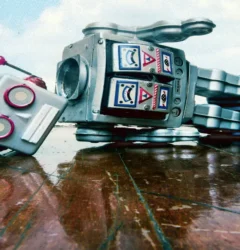Web Security
QR Codes 101: An Introduction to the Future of Digital Communication
- By seqrex
- No Comments
14 Apr

With the increasing use of smartphones, QR codes are becoming more popular as a means of digital communication. These codes can be scanned with a smartphone camera to provide users with a variety of information, such as website URLs, product details, and contact information. In this article, we will discuss QR codes in depth, their history, uses, and how they are changing the face of digital communication.
Table of Contents
- What are QR codes?
- The history of QR codes
- The benefits of using QR codes
- Different types of QR codes
- Static QR codes
- Dynamic QR codes
- How to create a QR code
- QR code scanners
- Built-in smartphone scanners
- Third-party scanners
- Uses of QR codes
- Marketing and advertising
- Product labeling and tracking
- Event management
- Digital payments
- QR codes and security
- The future of QR codes
- Conclusion
- FAQs
What are QR codes?
QR codes, short for Quick Response codes, are two-dimensional codes that can be scanned using a smartphone camera to provide users with information. They were first invented in 1994 by Denso Wave, a Japanese company, as a way of tracking automotive parts. QR codes can store a large amount of information, including text, URLs, contact information, and product details.
The history of QR codes
QR codes were initially developed for use in the automotive industry, but they have since become popular in many other areas, such as marketing and advertising, product labeling and tracking, event management, and digital payments.
They were first used in Japan in 2002, but it wasn’t until the rise of smartphones that QR codes became widely used. Today, QR codes can be found on billboards, in magazines, on product packaging, and in many other places.
The benefits of using QR codes
QR codes have several benefits, including:
- Easy to use: Scanning a QR code is easy and only requires a smartphone camera and a QR code scanner app.
- Can store a lot of information: QR codes can store a lot of information, such as URLs, contact information, and product details.
- Versatile: QR codes can be used in many different ways, such as marketing and advertising, product labeling and tracking, event management, and digital payments.
- Interactive: QR codes can be used to create interactive experiences for users, such as scavenger hunts or interactive museum exhibits.
Different types of QR codes
There are two main types of QR codes: static and dynamic.
Static QR codes
Static QR codes are fixed and contain the same information every time they are scanned. They are commonly used for simple tasks, such as providing a URL or contact information.
Dynamic QR codes
Dynamic QR codes contain information that can be changed after the code has been created. They are commonly used for tasks that require frequent updates, such as product labeling or event management.
How to create a QR code
Creating a QR code is easy and can be done in just a few steps:
- Choose a QR code generator tool.
- Enter the information you want to encode in the QR code, such as a URL or contact information.
- Choose the type of QR code you want to create (static or dynamic).
- Generate the QR code and save it as an image file.
QR code scanners
There are two main types of QR code scanners: built-in smartphone scanners and third-party scanners.
Built-in smartphone scanners
Many smartphones today have a built-in QR code scanner that can be accessed through the camera app. To scan a QR code, simply open the camera app and point it at the code. The scanner will automatically recognize the code and provide the user with the information contained within it.
Third-party scanners
Third-party QR code scanners are available as apps that can be downloaded from the app store. These apps often have additional features, such as the ability to scan barcodes or create QR codes.
Uses of QR codes
QR codes can be used in many different ways, including:
Marketing and advertising
QR codes can be used in marketing and advertising campaigns to provide users with additional information about products or services. They can be used to direct users to a website, provide a discount code, or offer additional product details.
Product labeling and tracking
QR codes can be used on product labels to provide customers with additional product information, such as ingredients or manufacturing details. They can also be used to track products through the supply chain.
Event management
QR codes can be used in event management to provide attendees with event details, such as schedules and maps. They can also be used for ticketing and registration.
Digital payments
QR codes can be used for digital payments, such as mobile payments or peer-to-peer payments. They can be used to transfer money between accounts or make purchases at stores.
QR codes and security
QR codes can pose a security risk if they are used to direct users to malicious websites or if they contain sensitive information, such as credit card details. Users should always be cautious when scanning QR codes and ensure that they trust the source of the code.
The future of QR codes
QR codes are becoming more popular as a means of digital communication, and their use is expected to continue to grow in
the future. As technology continues to evolve, so do the ways in which QR codes can be used. Some potential uses of QR codes in the future include:
Smart packaging
QR codes can be used on packaging to provide consumers with detailed information about a product, such as nutritional information or cooking instructions. They can also be used to provide customers with discounts or loyalty points.
Contactless payments
QR codes can be used for contactless payments, allowing customers to pay for purchases without the need for physical contact. This can help to reduce the spread of germs and increase convenience for customers.
Augmented reality
QR codes can be used to create augmented reality experiences for users. By scanning a QR code, users can be directed to an interactive experience that combines the real world with digital elements.
Personalized marketing
QR codes can be used to provide personalized marketing experiences for customers. By scanning a code, customers can be directed to personalized content, such as product recommendations or discounts based on their previous purchases.
Conclusion
QR codes are a powerful tool for digital communication and can be used in many different ways. They are easy to use, versatile, and can store a lot of information. As technology continues to evolve, the potential uses of QR codes will only continue to expand.
FAQs
- What is a QR code?
A QR code is a type of barcode that can store a lot of information, such as URLs, contact information, and product details.
- How do I scan a QR code?
To scan a QR code, simply point your smartphone camera at the code and use a QR code scanner app to read the code.
- What are the benefits of using QR codes?
QR codes are easy to use, can store a lot of information, and are versatile. They can be used in many different ways, such as marketing and advertising, product labeling and tracking, event management, and digital payments.
- What are the different types of QR codes?
There are two main types of QR codes: static and dynamic. Static QR codes contain fixed information, while dynamic QR codes can be updated after they are created.
- What is the future of QR codes?
The future of QR codes is bright, with potential uses including smart packaging, contactless payments, augmented reality, and personalized marketing.
Related Post
Recent Posts
- The Ultimate Defense: Preventing Content Scraping on Your Website

- Mastering WordPress Security: Creating Strong Passwords

- The Ideal Number of WordPress Plugins: A Comprehensive Guide

- Protecting Your WordPress Site: The Importance of Intrusion Detection System (IDS)

- The Ultimate Checklist for Detecting a Hacked Website

Categories
- Data (1)
- Web Security (23)
- WordPress (14)
We provide round-the-clock protection for your website with our state-of-the-art managed security services. You can relax and enjoy peace of mind knowing that we’ve got you covered. Our assurance: if we can’t secure your website, no one can.
© 2025 Seqrex. All rights reserved.


